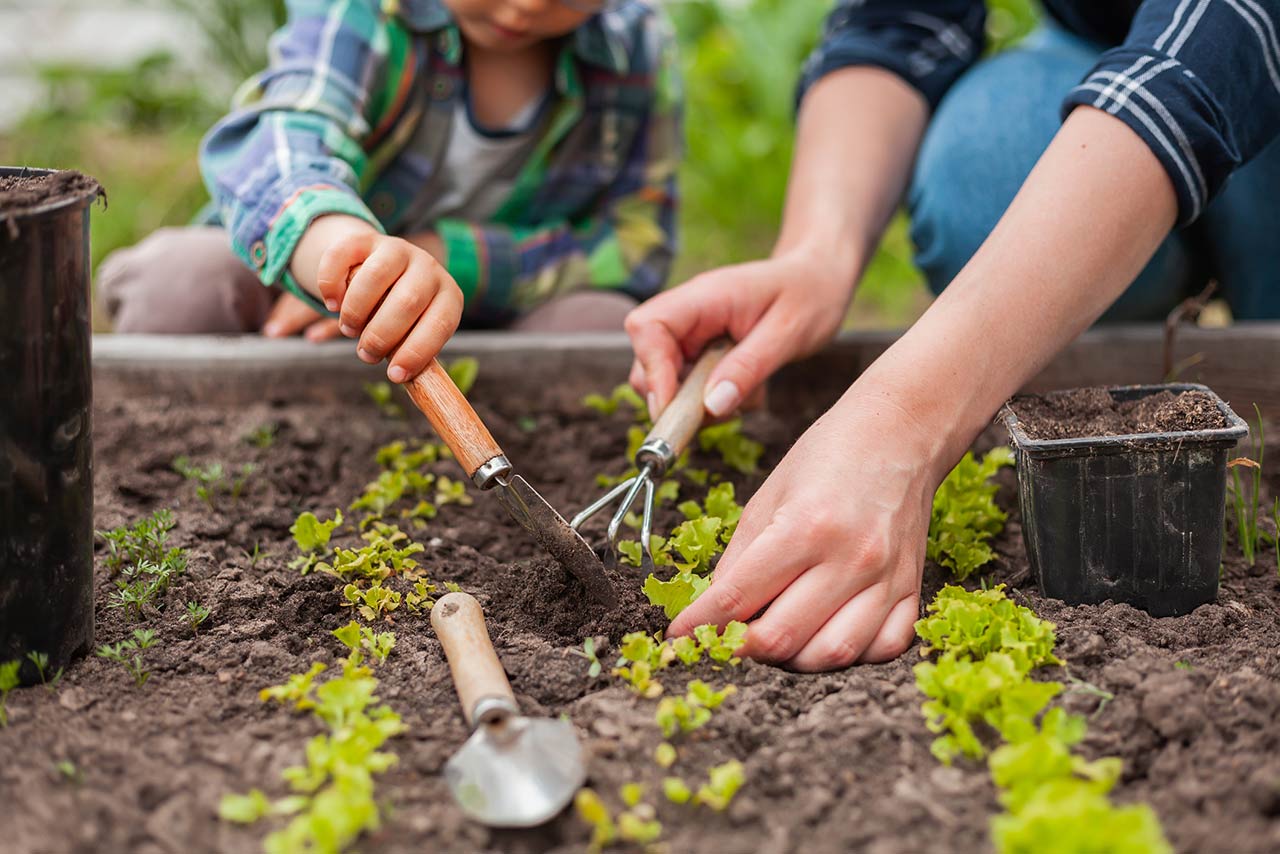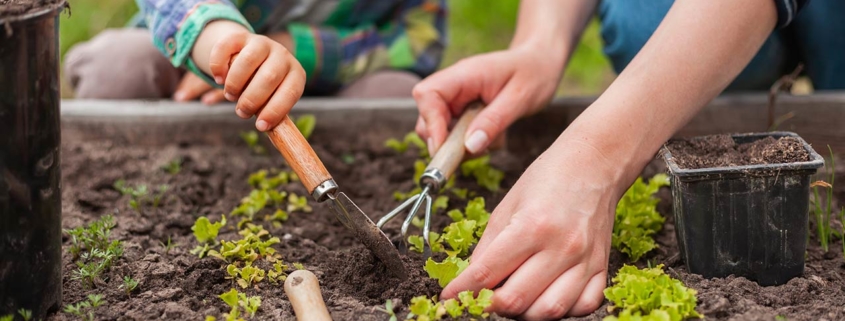Creating A Sustainable Home Garden

It’s nearly impossible not to be bombarded with news and information about how much safer and healthier organic food is for our bodies. Although, we also know how much more expensive organic produce can be.
SO WHY NOT GROW IT IN YOUR OWN YARD?
Contrary to what some may believe, growing a home garden doesn’t require extensive farming experience or the latest tools of the trade. It’s actually a lot simpler than that, and can help make your home a more sustainable one for you, your family, and even the environment.
WHAT ARE SOME OF THE ADVANTAGES OF HAVING A GARDEN AT HOME?
First of all, let’s go over the benefits of having a home garden:
Quick access to fruits and veggies – Instead of having to run to the grocery store every time you run out of salad or fresh basil, you can just stroll on over to your backyard to fetch some. Save yourself time and gasoline by foregoing the daily trip to the supermarket and visit your home garden instead.
Gain control over the food you eat – Even when food products are labeled “organic,” not knowing exactly who’s growing the food and how they’re handling it can be bit unsettling. Instead, by growing your own fruits, vegetables, and herbs, you gain control over exactly what chemicals are being used, or avoided altogether. That way, you truly know just what you’re putting in your mouth.
Reduce your carbon footprint on the environment – Having a home garden allows you to make a positive environmental impact. You can start a compost pile where you can recycle certain yard and kitchen waste products to produce a nutrient-rich additive for the soil in your garden. Not only does this create a natural fertilizer for your plants, it also minimizes the waste that you produce. And if you decide to avoid the use of chemicals, you can even reduce pollution and groundwater contamination.
Enjoyment and satisfaction – For many homeowners, watching their gardens go from seeds to fruit- and vegetable-bearing plants can be a real source of accomplishment and enjoyment. Seeing your hard work come to fruition can be really rewarding.
HOW TO GET YOUR OWN HOME GARDEN STARTED – AND FLOURISHING
Follow these tips to ensure you garden grows healthy, abundant plants, and trees to feed your family, and maybe even give you enough leftovers for the neighbors!
Test the soil – One of the first things you should do is make sure that the soil you plan on planting your seeds in is fertile enough to produce healthy plants. It’s pretty easy to do this – all you need is a cheap soil test kit that you can find at your local nursery.
By doing so, you’ll be able to identify whether or not the soil has too high of an alkaline or acid content. Once you’re armed with this info, you can add fertilizer and compost accordingly. While many plants will do well with balanced pH levels, others might prefer soil that’s a little more on the acidic side, and would therefore benefit more from plant-based fertilizers. Other plants do better with manure – it all depends on what you’re planting.
Find out which plants are ideal companions – Not every plant necessarily does well when placed beside specific plants. Find out which types of plants do well when they’re planted side by side. For instance, tomatoes and basil plants do well when planted beside each other; the basil boost the flavor of the tomatoes, and this combination also repels mosquitos. On the flip side, onions and asparagus aren’t the best of companions, and should be planted away from each other.
Make your own compost – Not only is this easy, it’ll also cut down on your household waste. A bunch of things can be added to your compost, such as leaf clippings, food scraps, and other organic items. Keep a compost both indoors and outdoors to make it easy and convenient to continue adding to it.
Add flowers to the vegetable garden – Even though your goal is to grow vegetables and fruit, consider adding some flowers to the garden. Not only will they enhance the beauty of the garden, but they’ll also attract the good bugs that eat plant-destroying aphids, and encourage cross-pollinating.
Add mulch – Adding mulch to the garden will help keep the weeds at bay, help the soil retain moisture, and protect the roots of the plants.
Grow fruit trees that fit your space – Depending on how much space you have to work with, you’ll need to figure out which fruits trees will be suitable in the space you have. A full-sized fruit tree will need an area that’s approximately 25×25 feet big. If you live in an urban area where space is limited, consider dwarf fruit trees; these little trees can thrive in as little as 3×3 feet of space (though they prefer 4×4 feet).
You may also choose to grow semi-dwarf fruit trees against walls to save some space. Dwarf fruit trees bear fruit sooner, so you can start enjoying your peaches or apples with less waiting time. Just be aware that the majority of fruit trees need two of the same type of fruit to cross-pollinate and produce fruit.
Don’t forget to water! – Depending on how much precipitation you get and what you’ve got growing, your garden will need to be watered at least 2 or 3 times per week. Do your homework on the plants you’re growing so you know exactly how much water they require.
As a general rule of thumb, it’s ideal to water either first thing in the morning, or later on in the evening, as watering during the afternoon when it’s particularly sunny and hot can actually burn the plants.
The freshest, safest, tastiest, and most economical fruits and vegetables that you’ll ever eat can easily be grown in your own backyard. Within a few short weeks, you can be bringing your own produce to the dinner table!





